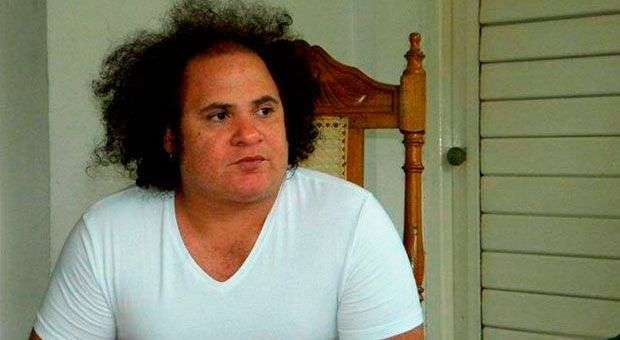Recently, a documentary about the life of singer Kelvis Ochoa was released. I know of a place, by the Swiss director Beat Borter , portrays Kelvis as a musician, poet , cook, dreamer, surrounded by his daily muses and inspirations .
The film was shown to large crowds in the last edition of the International Festival of New Latin American Cinema and from next March 13 will be showcased at the Yara cinema in the capital , and then get to the cinemas of all provinces.
Ochoa is one of the most prolific and popular artists of his generation. His work combines the dynamism of modern life with the most representative of our sound rhythms to achieve melodies and lyrics of great originality, meaning and feeling. Although born in Las Tunas in 1970, La Isla de la Juventud is the place where he developed his love of music. This site serves as one of the main scenarios of the material where he and his friends tell as in the late eighties it became a great creative workshop where they discovered themselves as artists.
Then we find Ramon ( Mongo ) Rives, the great master of sucu – suco , which inspired Ochoa in his love for traditional and indigenous rhythms of the land , among others as Silvio Rodriguez, Pablo Milanes , Frank Fernandez, Ernan Lopez – Nussa, Fernando Perez, Jorge Perugorría , Yusa , Roberto Carcasés and Kcho , who knows him from childhood .
“I know of a place” also makes a journey through his time in Habana Oculta, Kelvis and 4 gatos , the album that marks the beginning of his career. It tackles the special period in Havana, emigration to Spain with Habana Abierta project and of course the return to Cuba…
Creating , dreaming , living and working with his natural audience ” Kelvis is a musician who transcends heart to heart ,” as one interviewee expressed in the film in which we find the musician as a representative of a generation that had to face many difficulties , crossing borders and today is open to the future giving his best .
With the director, who had already filmed in Cuba in 1998 Life is filming on the work of the Cuban filmmaker Fernando Perez, OnCuba spoke to know details of the material and why Ochoa on this occasion.
“I have known Kelvis and his music for long. I have followed the work of Cuban musicians with great interest and love for what this film means a declaration of love to the culture of this country. Kelvis songs have much to do with the journey that has been his life that’s the reason for that title. During the Film Festival after screening it a man told me that the documentary expressed the Cuban identity and to me that was the biggest compliment I could receive. “
“I wanted to capture the essence of his life and work, but what struck me the most, no doubt, was his return to Cuba. We shot over eighty hours between interviews and presentations. The biggest challenge was getting all this material to work as a whole, coherent and meaningful, which I think was achieved. The idea of the title helped me to organize it. We include a lot of music performed especially for the occasion. In it there are songs from his new album due out this month Dolor con amor se cura and María Elena and Cuando el corazon. A very special moment is when Frank Fernández plays with an exquisite version of Longina, by Manuel Corona. I know a place is my tribute to this important generation of artists. “
Kelvis has been closely related to the cinema, has written the music for six films as Barrio Cuba, Lisanka and Vampires in Havana, among others. As a tribute to his generation he also defines the documentary and we talked to him as well:
“It’s a privilege, if you love movies and have collaborated with it, the best gift there is to be part of it, to be part of its history. To have this documentary made from the love and respect is a great joy. This is the documentary that every artist would want. It has an impeccable making, it is made with exquisite taste from the enjoyment and pleasure, as the filmmaker has always been aware of my musical creation.
We have a relationship of many years; he came to my music, understood and concurred with this documentary. He has seen beyond my work, as few, has ventured into the songs and internalized their stories. The documentary gathers testimonies as well since they are from important personalities and are essential links in Cuban music and culture, and if any could muster is a big challenge because they are virtually uncatchable. Their testimonies were moving for me, what a treat. This film is a gift to my colleagues, which shows how we grew from that stage we decided to make and sing songs. “
Photos: Gustavo Avila










